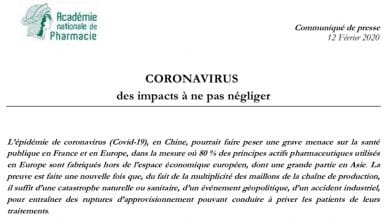
Nearly half of all doctors in the United States are now considered "restricted access." In 2008 the 77% was "accessible" to American doctors, today it is the 51%. But if doctors don't listen to scientific representatives, what do they listen to?
ACCESSMONITOR 2014 EXECUTIVE SUMMARY
If doctors don't listen to scientific representatives, what do they listen to?

Is this situation considered to constitute a point of no return for access to the doctor, a need for pharmaceutical companies to reinvent access strategies, a reconsideration of “access” at any cost?
According to the latest AccessMonitor ZS Associates TM survey of sales team contact reports from more than 200 pharmaceutical companies, prescribers' 51% were rated "affordable" in 2014, compared to 55% in 2013. While this year's decline is less pronounced than in previous years, it reflects the steady decline in access over the past decade.
Physicians who were considered “restricted access” (who met 31% to 70% of ISFs who requested a meeting) moved to “severely limited access” (who met 30% or fewer of the ISFs who requested it).
AccessMonitor TM examined data including approximately 35,000 sales associates, and interactions with approximately 325,000 physicians and prescribers.
This executive summary analyzes and reports key findings from 2014 AccessMonitor TM and offers insights into what the findings mean for the industry. With nearly 50% of physicians restricting access a crucial question comes to the fore, according to Pratap Khedkar, ZS of Managing Principal for Pharmaceuticals and Biotech: “If physicians aren't listening to sales reps, what are they listening to? ”
Key Findings
 Since the initial AccessMonitor TM survey in 2008, it has seen steadily falling admissions, with physicians' 77% rated “accessible” that year, compared to 65% in 2012, last year's 55%, and today's 51%.
Since the initial AccessMonitor TM survey in 2008, it has seen steadily falling admissions, with physicians' 77% rated “accessible” that year, compared to 65% in 2012, last year's 55%, and today's 51%.
There are considerable variations in access according to the specialty of the doctor: while oncologists and cardiologists have always had substantial limitations on access, doctors in specialties considered "rep-friendly" are becoming more difficult to access. In 2013, the 84% of dermatologists were accessible to representatives, this year they are only the 67%; among gastroenterologists, accessibility dropped from 63% to 47%.
Pratap notes that the decline in these specialties is “a clear call to action. It is proof that medical behavior change can no longer be ignored. Access won't get much worse, but it will not get better.
Pratap says access is also in decline geographically. Of the 10 most restrictive geographic areas in 2013, eight worsened in 2014. “The access problem does not appear to have bottomed out in some areas, even where access was already low”
Vertical and horizontal integration is one of the main reasons for declining access. When healthcare payers and providers are consolidated, a new payer-provider nexus is created; and when hospitals manage medical surgeries they also manage those practices that limit access," it becomes more difficult for doctors to be independent and to prescribe the drugs they want," says Pratap. “And once you demonstrate success in one area, it accelerates the freeze on access even more.”
The size of the pharmaceutical company places the restrictions in sharp relief. Compared to large and small businesses, midsize businesses are doing better: they reach 61% of their desired leads, versus 45% for large businesses and 48% for small businesses.
 Pratap says one reason for this disparity is that midsize companies may specialize in a limited number of therapeutic areas, and may come up with new products that doctors want to hear about. Additionally, he notes that these midsize companies are often more nimble and possess the resources and longevity needed to establish credibility and a good reputation.
Pratap says one reason for this disparity is that midsize companies may specialize in a limited number of therapeutic areas, and may come up with new products that doctors want to hear about. Additionally, he notes that these midsize companies are often more nimble and possess the resources and longevity needed to establish credibility and a good reputation.
Reduced accessibility has a cost: AccessMonitor TM has established that the pharmaceutical and biotech industries lose about $ 1.4 billion for "missed" meetings. (A match is considered a failure if a leading representative of the class cannot perform it). The cost of unfeasible meetings appears to have leveled off, as companies have largely eliminated inefficiencies from their sales force and identified alternative channels as the best avenue to improve customer access and engagement, Pratap says.
Three reasons why access won't improve anytime soon
Pharmaceutical companies need to be aware that the dynamic of restricting access will continue. Pratap cites three reasons why it won't improve access:
- First, the reduction in the number of representatives has not eased the access problem. Access still dropped, by a whopping one-third, after companies cut the number of field reps. Indeed, the reduced number of ISF probably leads to a slight deterioration.
- Second, in some specialties like probably oncologists, admissions continue to drop further due to a glut of new drugs moving through clinical trials. Ultimately, as they reach the market, the number of companies and brands attempting to access specialists causes further restrictions. (This is somewhat balanced by the fact that access usually improves temporarily when a company introduces a first-of-its-kind drug.)
- Third, the consolidation of health service managers will result in health care systems and practices with increased access restrictions.
Pratap says the phenomenon will take hold even in places where it hasn't yet occurred, warning that the pace and nature of it could vary by geographic area.
What Pharma and Biotech companies will be able to do.
“There will always be room for the ISF,” Pratap says. “The access channel will not be eliminated, but the diameter will be reduced. Companies need to use other channels, not only do pharma representatives have to live with other channels, but work with them, coordinating all sources of information.
“Switching to alternative channels (and figuring out how sales associates fit into this new environment) can seem daunting, but a few steps can help the industry along the way:
Know the customer. Different doctors prefer different approaches, which makes it important to understand when, how, and how often to approach individual doctors—that is, to understand doctors' affinity for particular channels. “It is time for the client to decide what they are willing to accept, how they will choose to engage with us, and not us to determine how to engage with them,” says Pratap.
This fall, ZS Associates will release AffinityMonitor TM , which can help determine physician preferences for individual channels. For example, ZS has found that taken together, physician affinities to new channels such as the Internet and email are low, which are often less expensive than traditional channels.
Leverage existing customer channels. Pharmaceutical sales and marketing companies need to optimize emails, websites and eventual spokespersons because, as Pratap observes, “it is very clear that doctors are turning to other sources.
 “Furthermore, most teaching hospitals have mostly banned access to ISFs, which means that new doctors will be used to accessing product information from alternative channels rather than pharmaceutical sales reps.
“Furthermore, most teaching hospitals have mostly banned access to ISFs, which means that new doctors will be used to accessing product information from alternative channels rather than pharmaceutical sales reps.
Turn the ISF into an orchestrator. Representatives need to work closely with marketing departments to implement customer-centric approaches.
FSIs can orchestrate how to optimize the collection of incoming and outgoing customer information about the physician experience, and working with marketing to design the best ways to interact with individual physicians.
Rethink access and sales priorities: “Access” must include more sales propositions; you will have to say something different from what is being said today. Companies need to think of ISF visits as "event information gathering," rather than simply sales pitches, Pratap says, and determine the best channels to engage with customers, who may or may not be the pharmaceutical representative of the companies. sales.
Customer-centric marketing is key to determining which channels or opportunities are best for individual customers, enabling the business to engage with the customer on the customer's terms.
As a result, engagement, which is the extent to which customers have responded to sales and marketing, is supplanting access as the most important metric for measuring success, Pratap says. For example, will a doctor open an unspecified email sent by the company, or will the same doctor open a single email sent by a sales representative?
“The definition of access needs to be broadened to include channels beyond the traditional one called face-to-face,” Pratap says. “And monitoring access isn't enough, businesses need to start monitoring engagement.
“Engagement ratings are easier to apply with electronic channels of field rep activity, but you will need to find a disciplined way to measure not only the number of contacts a rep makes, but the success of the contacts in terms of of customer engagement.





